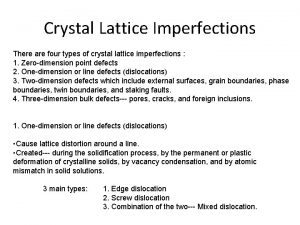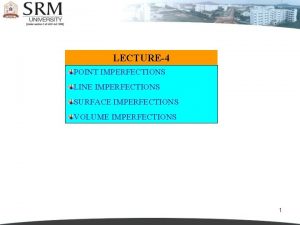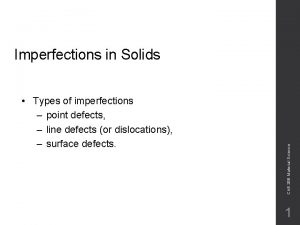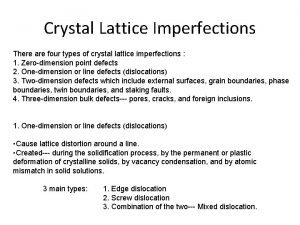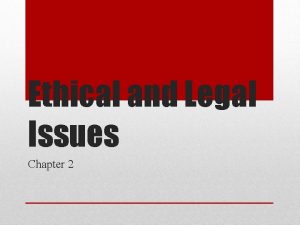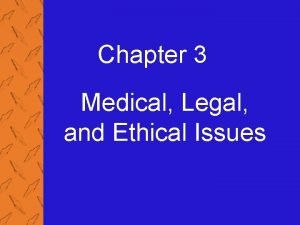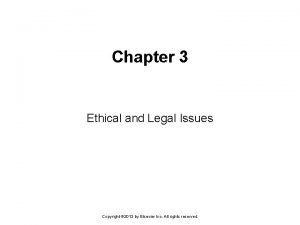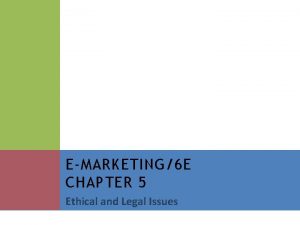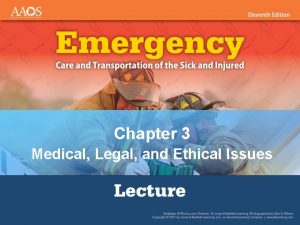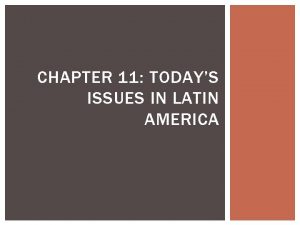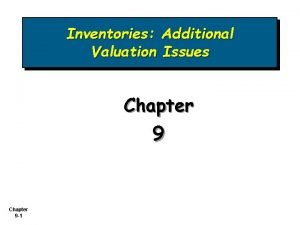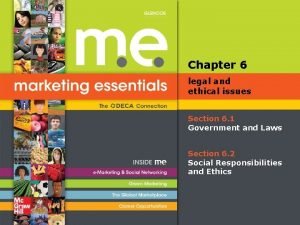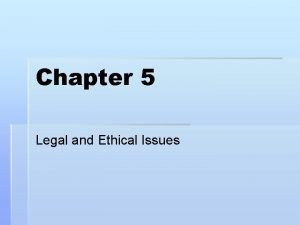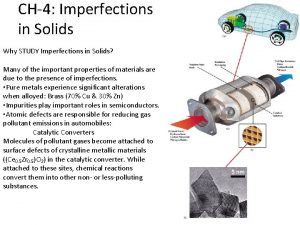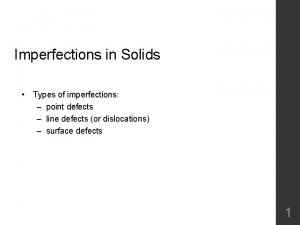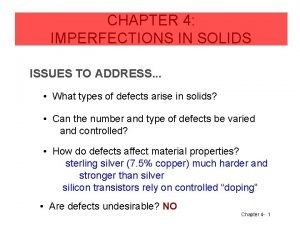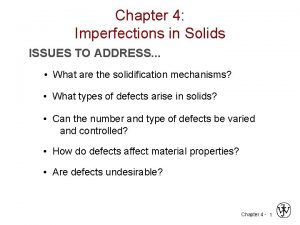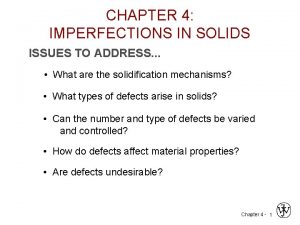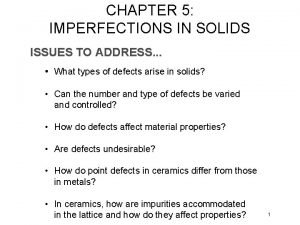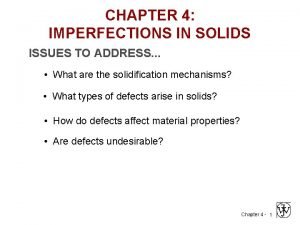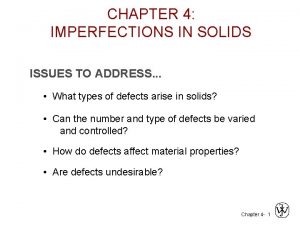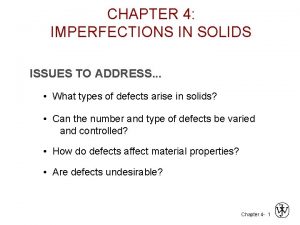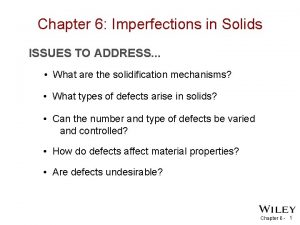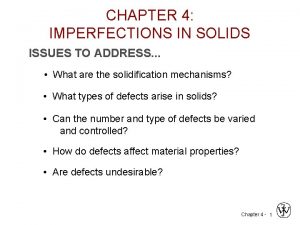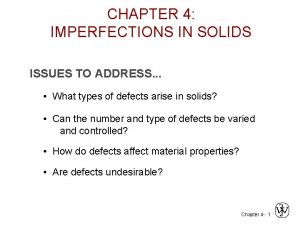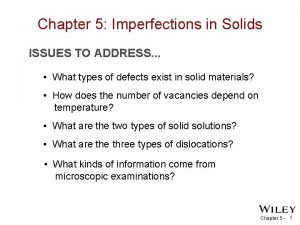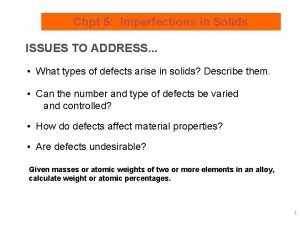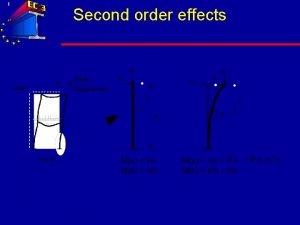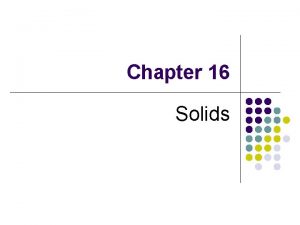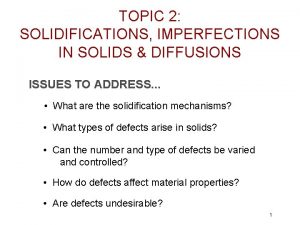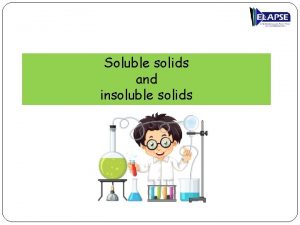CHAPTER 4 IMPERFECTIONS IN SOLIDS ISSUES TO ADDRESS





















- Slides: 21

CHAPTER 4: IMPERFECTIONS IN SOLIDS ISSUES TO ADDRESS. . . • What types of defects arise in solids? • Can the number and type of defects be varied and controlled? • How do defects affect material properties? • Are defects undesirable? Chapter 4 - 1

TYPES OF IMPERFECTIONS • Vacancy atoms • Interstitial atoms • Substitutional atoms Point defects • Dislocations Line defects • Grain Boundaries Area defects Chapter 4 - 2

• Vacancies: POINT DEFECTS -vacant atomic sites in a structure. • Self-Interstitials: -"extra" atoms positioned between atomic sites. Chapter 4 - 3

EQUIL. CONCENTRATION: POINT DEFECTS • Equilibrium concentration varies with temperature! Chapter 4 - 4

MEASURING ACTIVATION ENERGY • We can get Q from an experiment. • Measure this. . . • Replot it. . . Chapter 4 - 5

ESTIMATING VACANCY CONC. • Find the equil. # of vacancies in 1 m 3 of Cu at 1000 C. • Given: Note that r in g/m 3: r = atom mass×N/1 m 3 (in g/atom) atom mass = A(atomic #)/NA • Answer: Chapter 4 - 6

OBSERVING EQUIL. VACANCY CONC. • Low energy electron microscope view of a (110) surface of Ni. Al. • Increasing T causes surface island of atoms to grow. • Why? The equil. vacancy conc. increases via atom motion from the crystal to the surface, where they join the island. Reprinted with permission from Nature (K. F. Mc. Carty, J. A. Nobel, and N. C. Bartelt, "Vacancies in Solids and the Stability of Surface Morphology", Nature, Vol. 412, pp. 622 -625 (2001). Image is 5. 75 mm by 5. 75 mm. ) Copyright (2001) Macmillan Publishers, Ltd. Chapter 4 - 7

POINT DEFECTS IN ALLOYS Two outcomes if impurity (B) added to host (A): • Solid solution of B in A (i. e. , random dist. of point defects) OR Substitutional alloy (e. g. , Cu in Ni) Interstitial alloy (e. g. , C in Fe) • Solid solution of B in A plus particles of a new phase (usually for a larger amount of B) Second phase particle --different composition --often different structure. Chapter 4 - 8

COMPOSITION Definition: Amount of impurity (B) and host (A) in the system. Two descriptions: • Weight % • Atom % • Conversion between wt % and at% in an A-B alloy: • Basis for conversion: Chapter 4 - 10

COMPOSITION EXAMPLE Calculate the composition, in atom percent, of an alloy that contains 97 wt% aluminum and 3 wt% copper. Chapter 4 - 10

LINE DEFECTS Dislocations: • are line defects, • cause slip between crystal plane when they move, • produce permanent (plastic) deformation. Play movie Chapter 4 - 11

LINE DEFECTS Dislocations: • are line defects, • cause slip between crystal planes when they move, • produce permanent (plastic) deformation. Schematic of a Zinc (HCP): • before deformation • after tensile elongation slip steps Chapter 4 - 11

INCREMENTAL SLIP • Dislocations slip planes incrementally. . . • The dislocation line (the moving red dot). . . separates slipped material on the left from unslipped material on the right. Simulation of dislocation motion from left to right as a crystal is sheared. (Courtesy P. M. Anderson) Chapter 4 - 12

BOND BREAKING AND REMAKING • Dislocation motion requires the successive bumping of a half plane of atoms (from left to right here). • Bonds across the slipping planes are broken and remade in succession. Atomic view of edge dislocation motion from left to right as a crystal is sheared. (Courtesy P. M. Anderson) Chapter 4 - 13

Real dislocations do not have to be Edge dislocations Screw dislocation Mixed dislocation Real dislocations Chapter 4 - 13

DISLOCATIONS & CRYSTAL STRUCTURE • Structure: close-packed planes & directions are preferred for dislocation lines and slip vectors. view onto two close-packed planes. • Comparison among crystal structures: FCC: many close-packed planes/directions; HCP: only one plane, 3 directions; BCC: none Mg (HCP) • Results of tensile testing. tensile direction Al (FCC) Chapter 4 - 14

AREA DEFECTS: GRAIN BOUNDARIES Grain boundaries: • • are boundaries between crystals. are produced by the solidification process, for example. have a change in crystal orientation across them. impede dislocation motion. Schematic Low-angle or tilt grain boundary Adapted from Fig. 4. 7, Callister 6 e. Chapter 4 - 15

OPTICAL MICROSCOPY (1) • Useful up to 2000 X magnification. • Polishing removes surface features (e. g. , scratches) • Etching changes reflectance, depending on crystal orientation. close-packed planes Adapted from Fig. 4. 11(b) and (c), Callister 6 e. (Fig. 4. 11(c) is courtesy of J. E. Burke, General Electric Co. micrograph of Brass (Cu and Zn) 0. 75 mm Chapter 4 - 16

OPTICAL MICROSCOPY (2) Grain boundaries. . . • are imperfections, • are more susceptible to etching, • may be revealed as dark lines, • change direction in a polycrystal. Adapted from Fig. 4. 12(a) and (b), Callister 6 e. (Fig. 4. 12(b) is courtesy of L. C. Smith and C. Brady, the National Bureau of Standards, Washington, DC [now the National Institute of Standards and Technology, Gaithersburg, MD]. ) Chapter 4 - 17

OPTICAL MICROSCOPY (1) • Useful up to 2000 X magnification. • Polishing removes surface features (e. g. , scratches) • Etching changes reflectance, depending on crystal orientation. close-packed planes Adapted from Fig. 4. 11(b) and (c), Callister 6 e. (Fig. 4. 11(c) is courtesy of J. E. Burke, General Electric Co. micrograph of Brass (Cu and Zn) 0. 75 mm Chapter 4 - 16

SUMMARY • Point, Line, and Area defects arise in solids. • The number and type of defects can be varied and controlled (e. g. , T controls vacancy conc. ) • Defects affect material properties (e. g. , grain boundaries control crystal slip). • Defects may be desirable or undesirable (e. g. , dislocations may be good or bad, depending on whether plastic deformation is desirable or not. ) Chapter 4 - 18
 Lattice imperfections
Lattice imperfections Volume imperfection
Volume imperfection Wendelin wright
Wendelin wright Delayed differentiation and modular design
Delayed differentiation and modular design Spiral planar ramp resulting from shear deformation
Spiral planar ramp resulting from shear deformation Memory swaping
Memory swaping Explain how dishes on a menu address environmental issues
Explain how dishes on a menu address environmental issues Eduqas hospitality and catering
Eduqas hospitality and catering Chapter 14 solids liquids and gases worksheet answers
Chapter 14 solids liquids and gases worksheet answers Kinetic molecular theory of solid
Kinetic molecular theory of solid Chapter 11 - states of matter: liquids and solids
Chapter 11 - states of matter: liquids and solids Chapter 20 today's issues in africa
Chapter 20 today's issues in africa Ethical and legal issues chapter 2
Ethical and legal issues chapter 2 Chapter 3 medical legal and ethical issues
Chapter 3 medical legal and ethical issues Chapter 3 legal and ethical issues
Chapter 3 legal and ethical issues Chapter 20 today's issues in africa
Chapter 20 today's issues in africa Legal and ethical issues chapter 5
Legal and ethical issues chapter 5 Chapter 3 medical legal and ethical issues
Chapter 3 medical legal and ethical issues Chapter 11 today's issues in latin america
Chapter 11 today's issues in latin america Chapter 9 inventories additional valuation issues
Chapter 9 inventories additional valuation issues Chapter 6 legal and ethical issues
Chapter 6 legal and ethical issues Chapter 5 legal and ethical responsibilities
Chapter 5 legal and ethical responsibilities
